
Tree Born in 1765

Tree Born in 1765 |
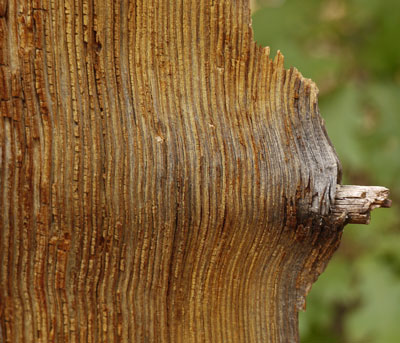
Wood Growth Around Branch |
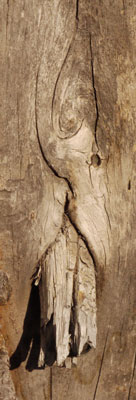
Wood Growth |

Wood Growth Around Branch |
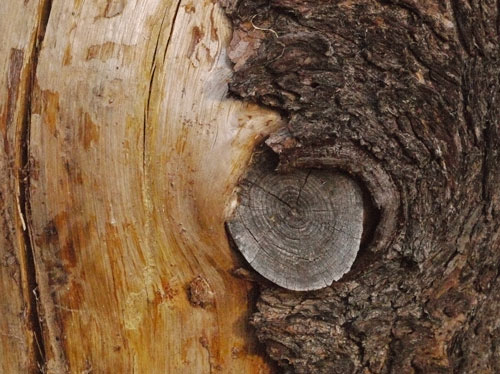
Wood, Bark Growth Around Branch |
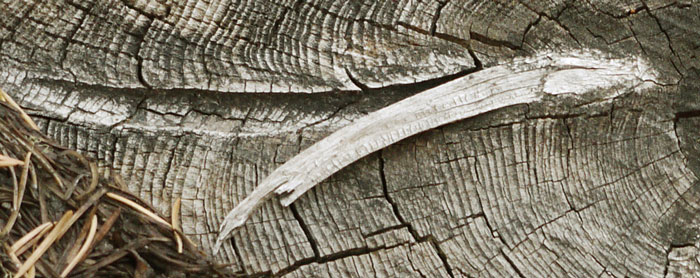
Wood Growth Around Branch |
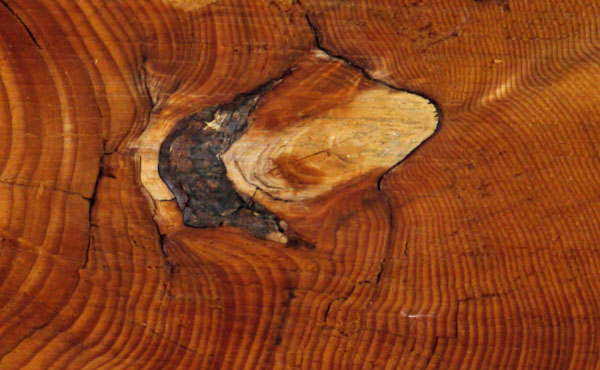
Wood Growth Around Branch |
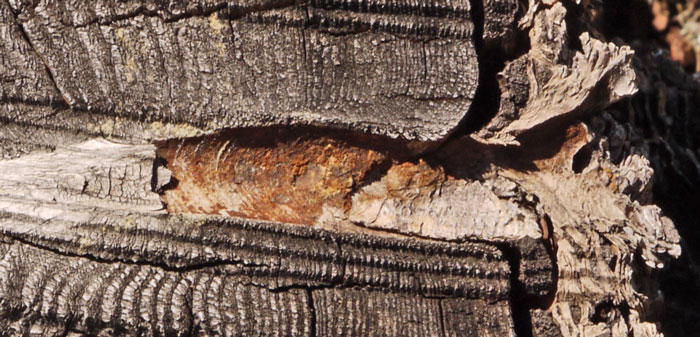
Wood Growth Around Branch |
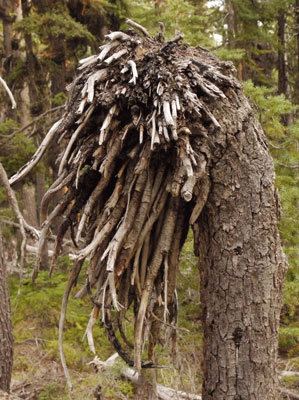
Many Branches |
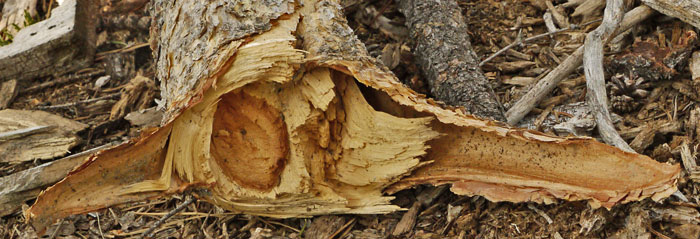
BrokenBranch.jpg |
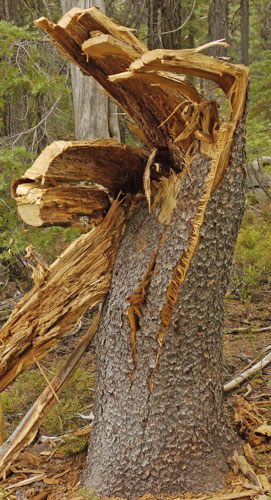
Tree With Shear Failure |

Shear Failure |

Wood Healing Over Crack |
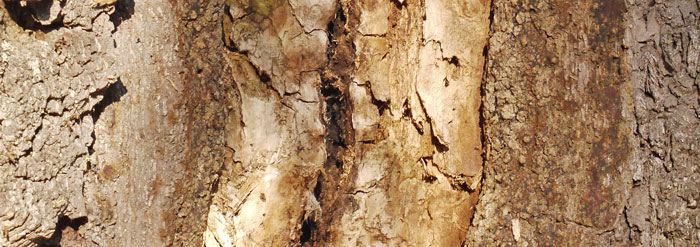
Bark, Wood at Crack |
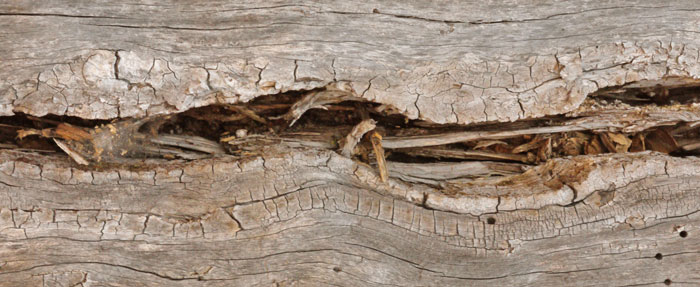
Wood at Crack |

Radial Crack, Healing Wood |
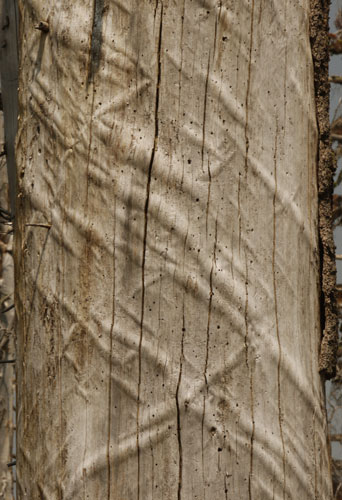
Right and Left Hand Helical Ridges |

Various Helix Angles |
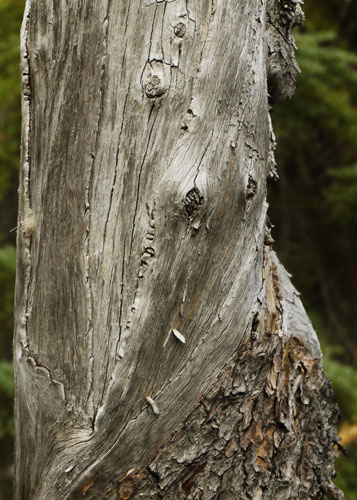
Various Helix Angles |
| Most helical trees I saw were right hand, but a few were left handed. In broken trees, I saw right, left, and straight grains in single trees. | |
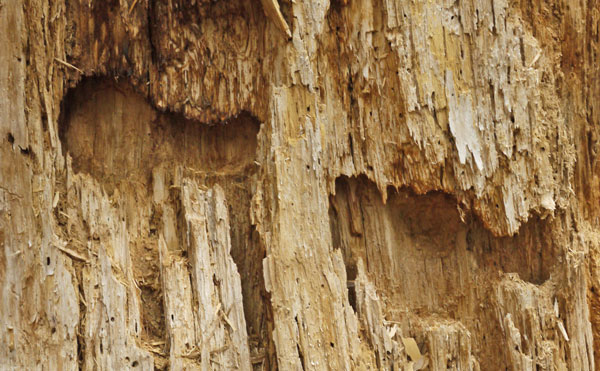
Helical Rodent or Woodpecker Tunnel |
| A few times, I saw helical tunnels like this, perhaps 1½" diameter. |
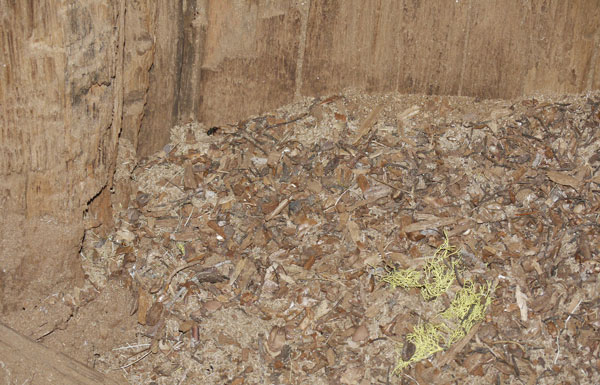
Inside Hollow Tree |
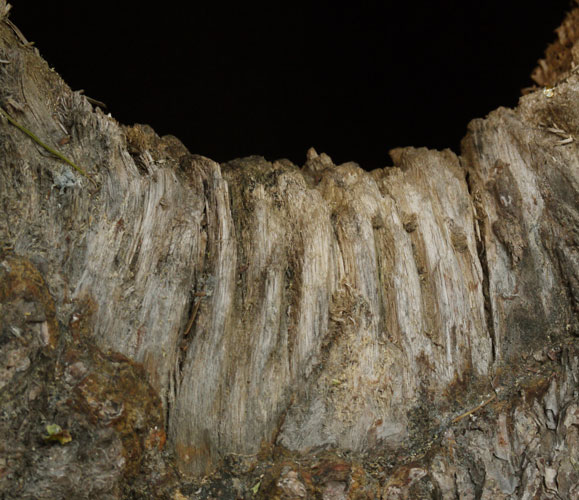
Hollow Tree Opening, Tool Marks |

Openings in Hollow Tree |

Inside of Hollow Tree |
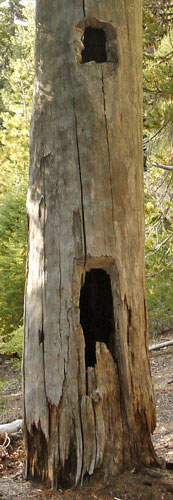
Openings in Hollow Tree |
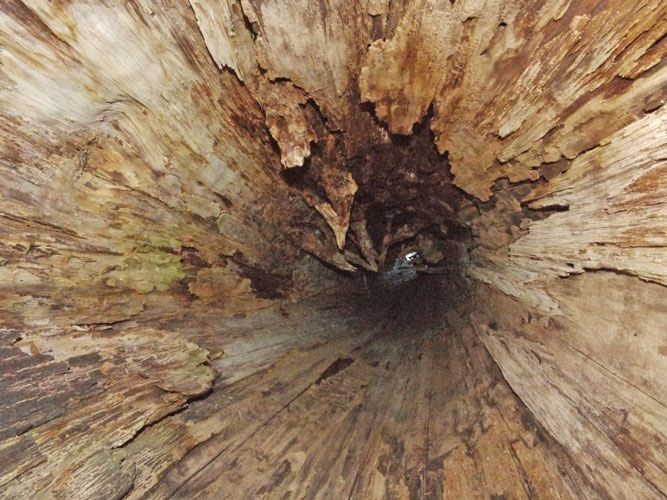
Inside of Hollow Tree Looking Up |
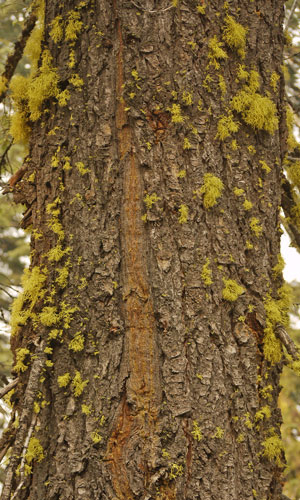
Lightning Scar |
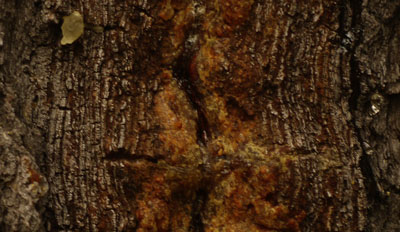
Lightning Scar Healing |
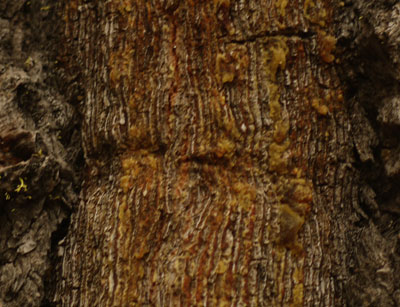
Lightning Scar Healing |

Lightning Scar |
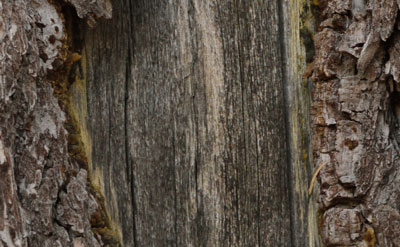
Lightning Scar Detail |
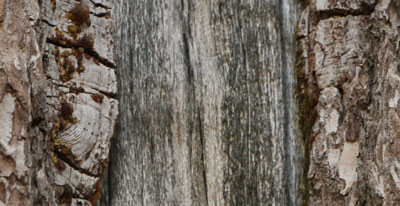
Lightning Scar Detail |
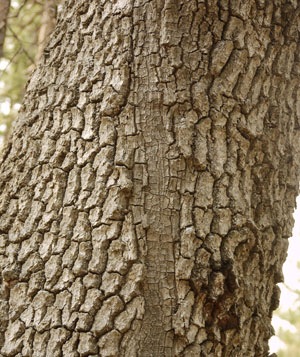
Lightning Scar |

Lightning Scar Detail |
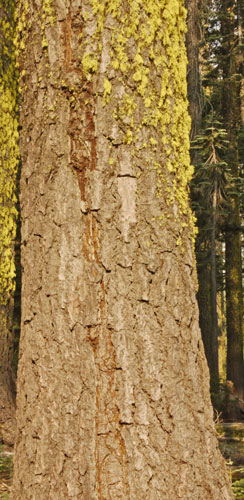
Lightning Scar |
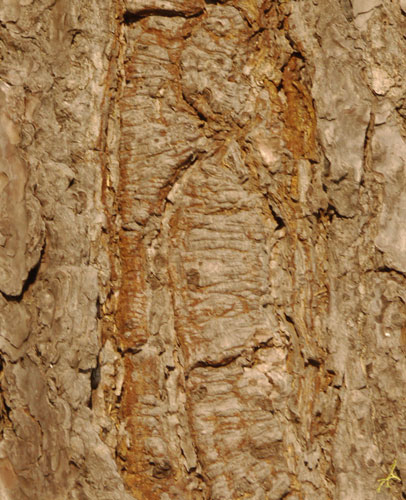
Lightning Scar Detail |

Lightning Scar Detail |
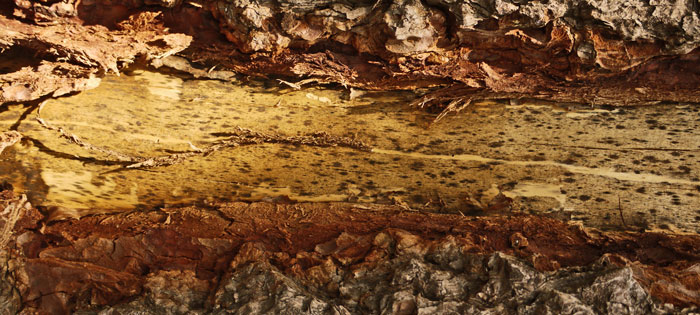
Lightning Scar Detail |
| Note the freshly shredded bark. The white stripe, resistant to fungal discoloration, may be the path of most of the current of the lightning. Note the shredded zylem and phloem bonded to the white strip. |
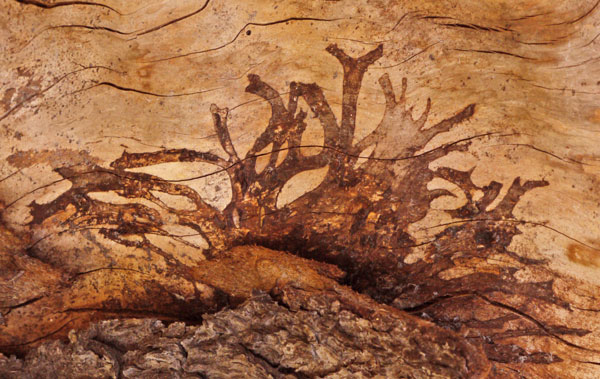
Roots of a Fungus |
| What in a plant would be called roots, in a fungus is called mycelium. The mycelium branches to a network of threadlike filaments called hyphae. The examples above and below were between tree trunks and loose bark. The mycelium is so fragile that digging it up or leaving it exposed to air usually completely detroys it. |
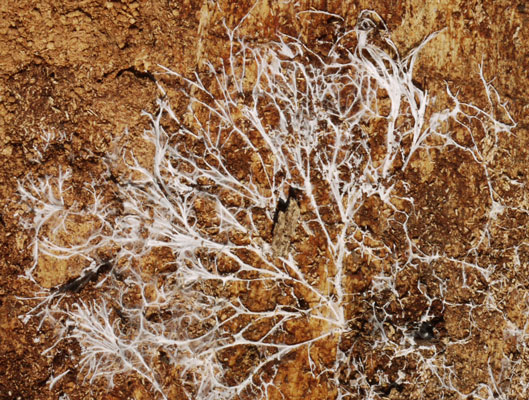
Roots of a Fungus |
| I found it interesting that sometimes certain areas of a log were quite rotten, while other areas were unaffected. |

Center and Outside Intact |
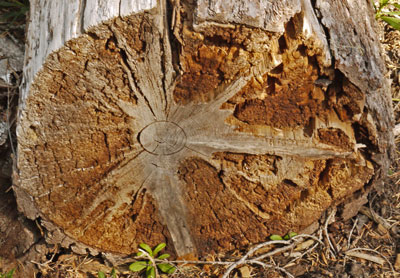
Radial Spokes of Intact Wood |
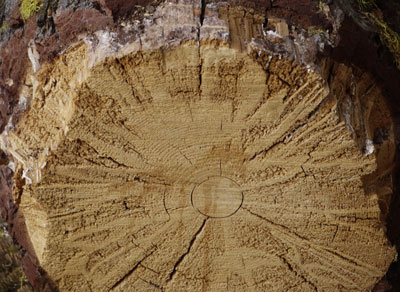
Radial Spokes of Intact Wood |
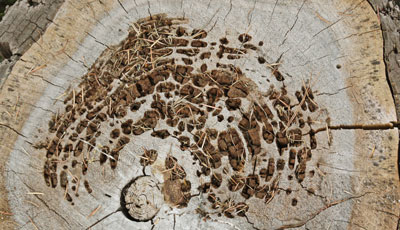
Concentric Rings of Various Types of Rot |

Wet Outer Annular Area |
| A sharply defined outer zone is much wetter than the center. There are some drier raial spoke areas extending into the wet ring. Some spots of fuzzy fungus are in the wet zone. The wetness may be rain or sap. |
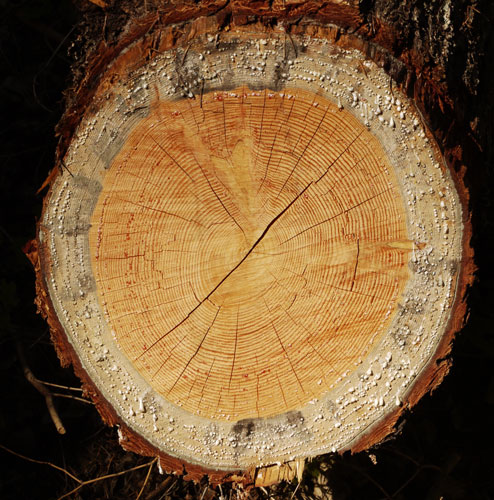
Moldy, Sappy Outer Annular Area |
| Though this log seems dry, it may have been wetter when the mold grew. The mold is growing where most sap is oozing out of the log, but isolated sappy rings in the center of the log show no mold. The mold is of various colors, perhaps different stages of life or different species. |
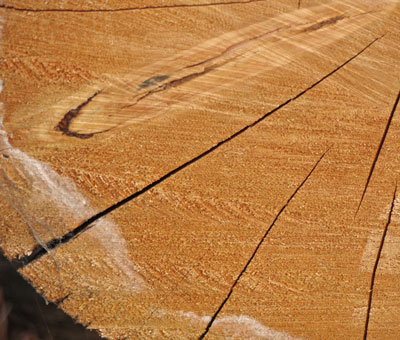
Ring of New White Mold on Newly Sawn Log |
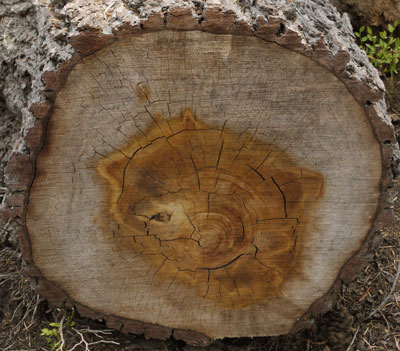
Irregular Annular Moldy Ring |
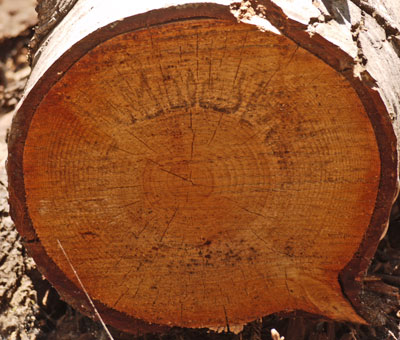
Ring of Radial Flame Shapes of Dark Mold |
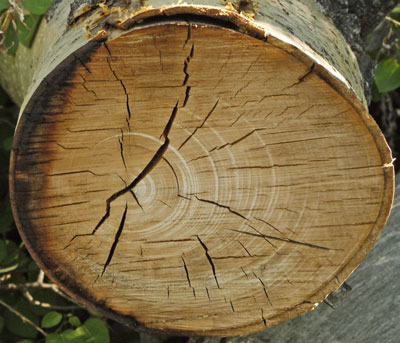
Some Annual Rings are White |

Bent Tree |

Trees Bent by Wind, Snow |
| The trees bent uphill were probably bent by wind. Others bent downhill at ground level were probably bent by sliding snow slabs, and eventually recovered to grow vertically. |

Rock Gouge |
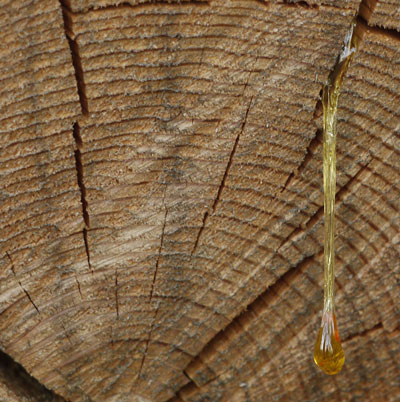
Oozing Sap |
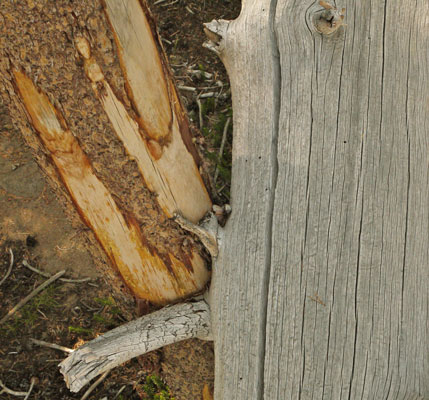
The tree on the right fell and scraped the bark off of the left tree. |